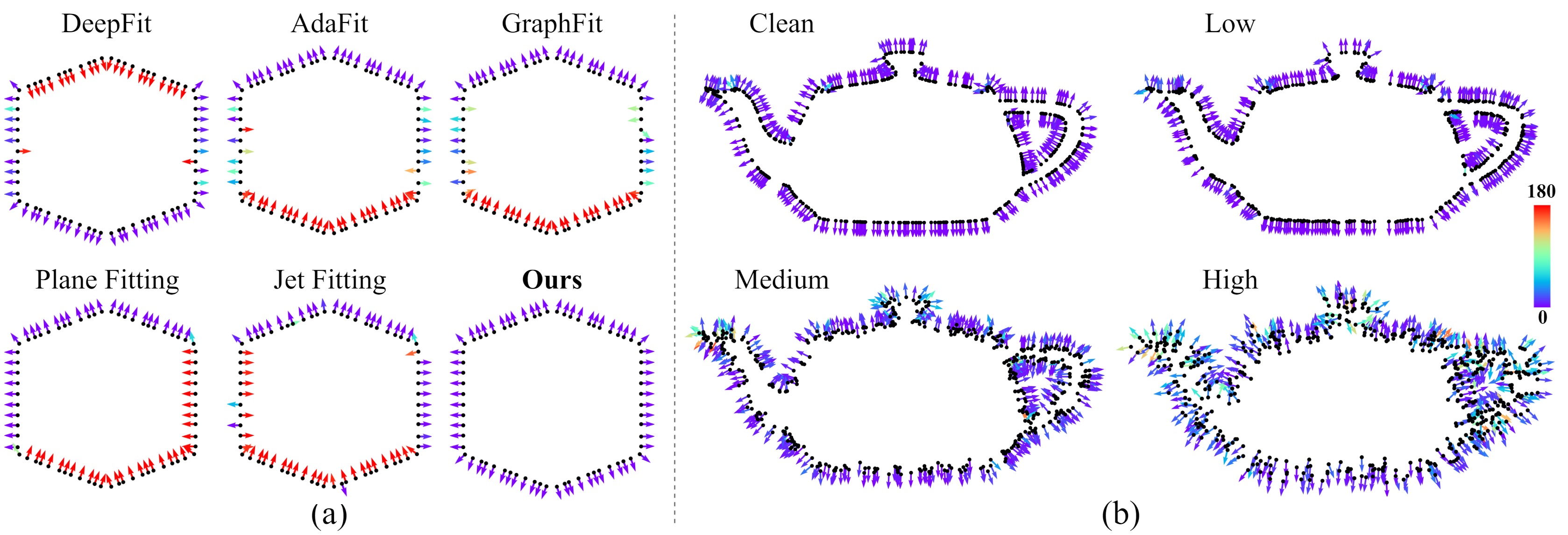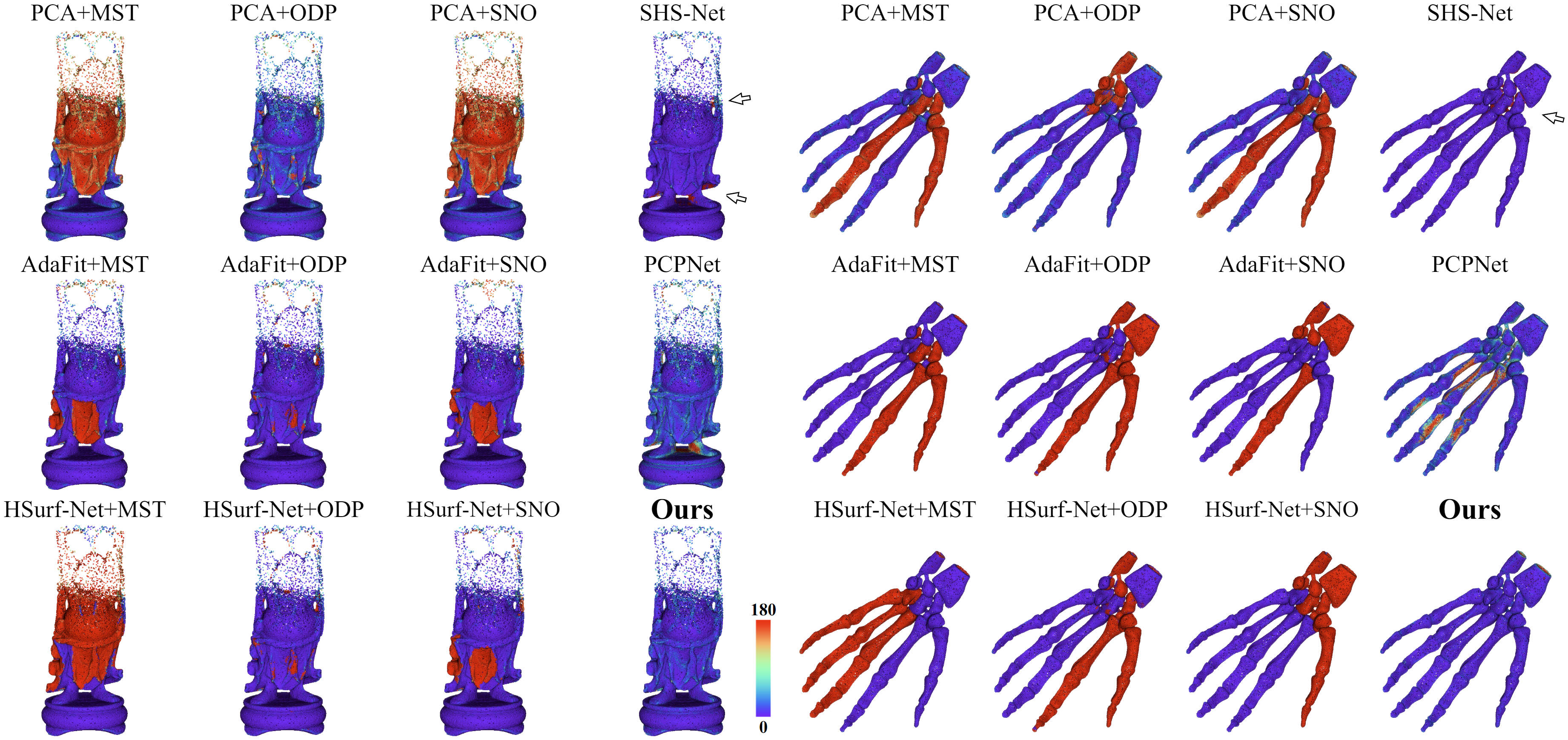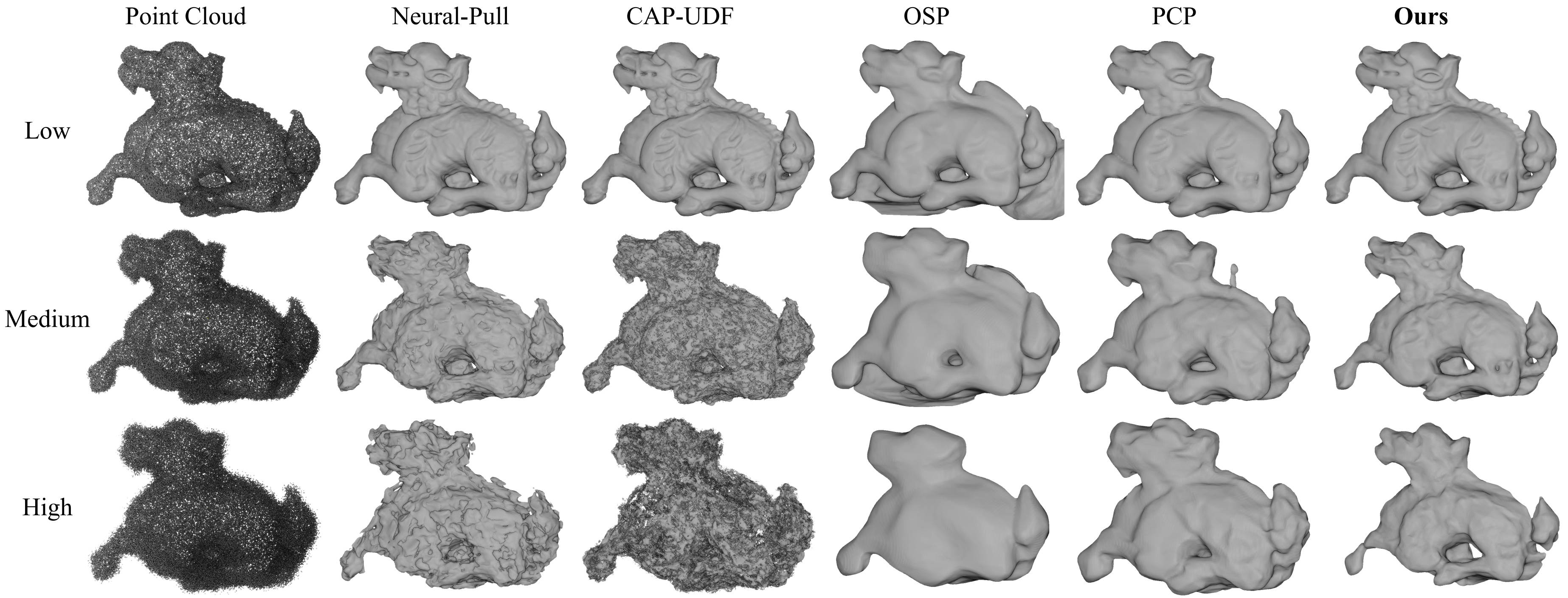
(a) Existing surface fitting-based normal estimation methods can only produce unoriented normals (arrows) with inconsistent orientations. (b) Our method can estimate oriented normals (arrows) from unevenly sampled point clouds (black dots) with varying noise levels. The color of the arrow indicates the angle error compared to the ground truth.




